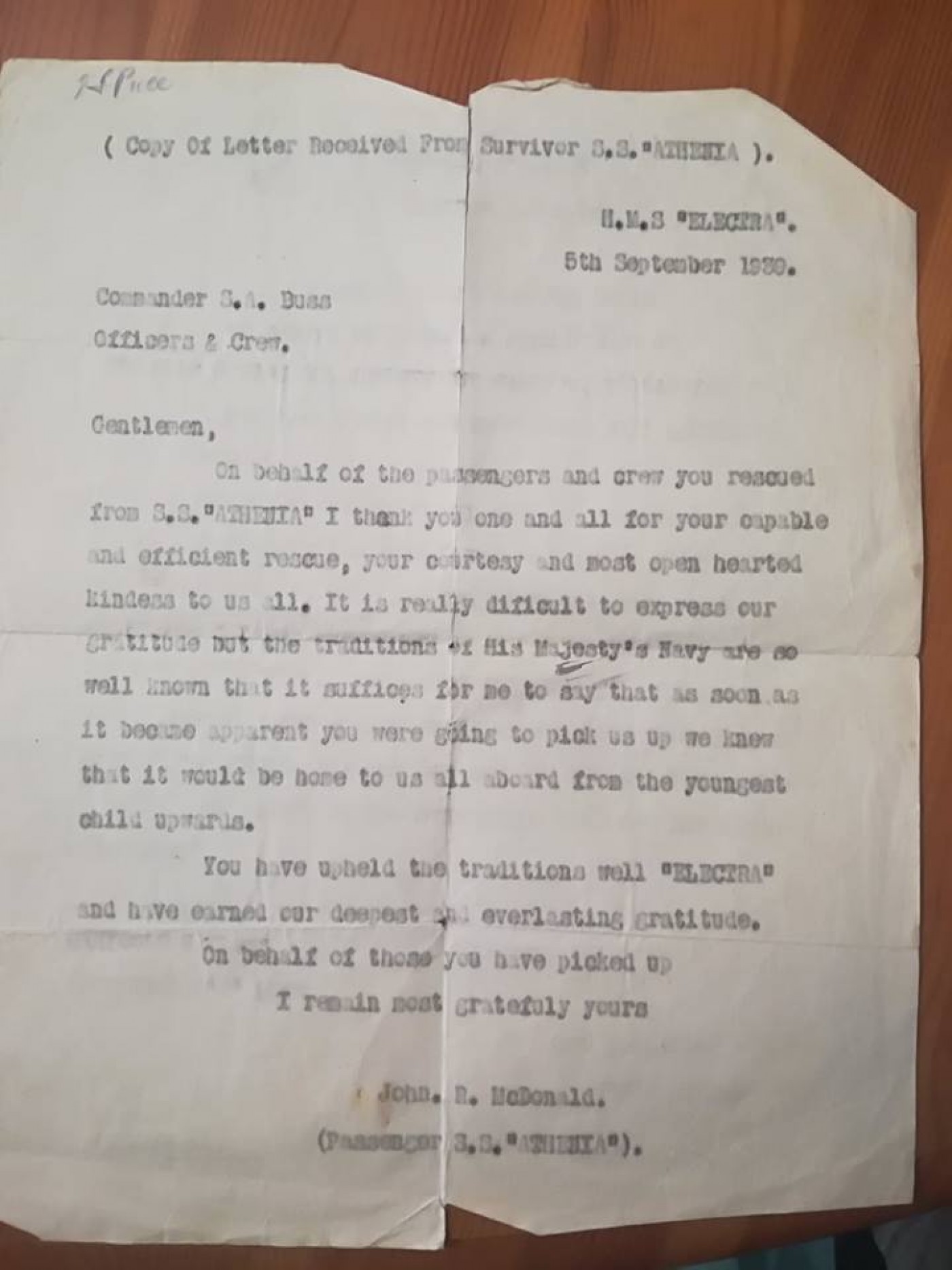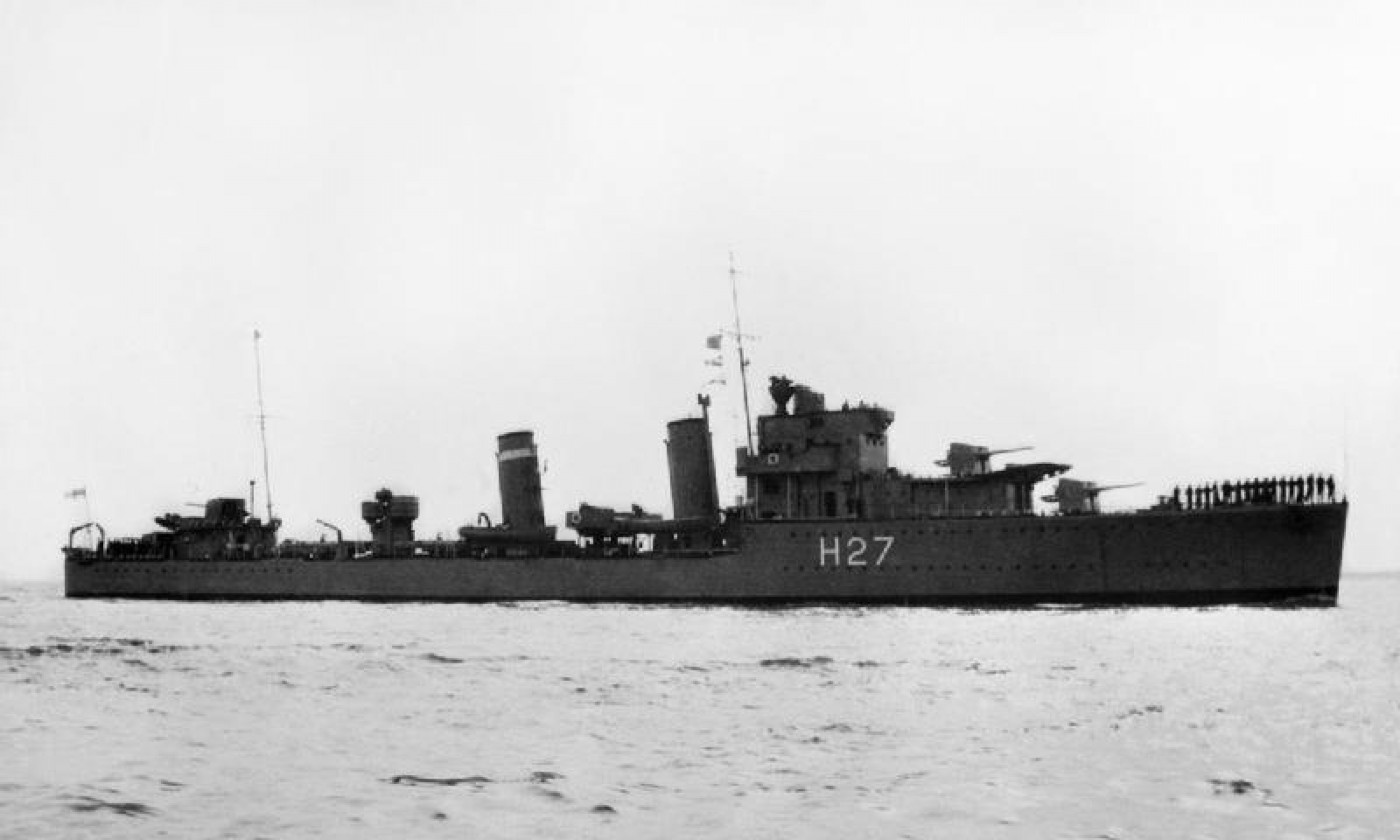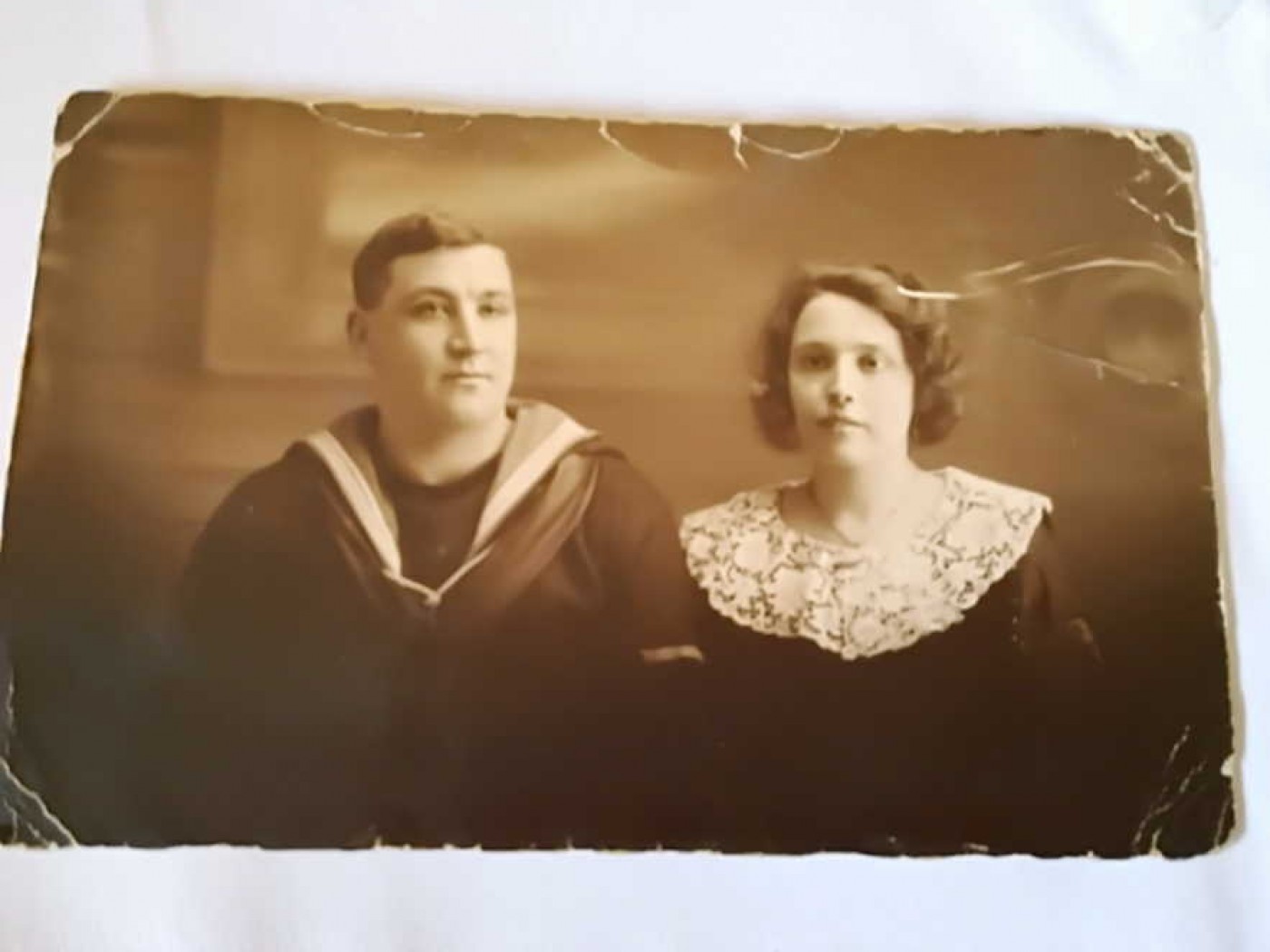Monday, September 03 2018
On the 3 September 1939, the SS Athenia was torpedoed by a German submarine in the Western Approaches, resulting in the death of 117 civilian passengers and crew. Several ships responded to her distress call including HMS Electra. She was the first UK ship to be sunk by Germany during the Second World War. Researcher Charlotte Ward has looked into this story and uncovered a personal connection.
I am currently undertaking a project to research and build my family tree. Through this process I have uncovered several interesting stories and characters amongst my ancestors but have been particularly drawn to the life of my great-grandfather George Edwin Price. George, my dad’s maternal grandfather, was born in Staffordshire in 1898 and, just before the outbreak of the First World War, joined the Royal Navy. As a naval historian, I was particularly fascinated by his naval career and wanted to learn more. Using records found in my parent's loft as well as genealogy websites like Ancestry, we found out more about his career in the navy, which spanned the First and Second World Wars. His records also gave us an insight into how he looked -he had blue eyes, a fair complexion and had tattoos of anchors on his forearms. The first ship he served on, as a boy, was HMS Impregnable.
On the 31 May 1916, Britain was involved in the largest naval battle of the First World War – the Battle of Jutland - and George Edwin, now an 18 year old Able Seaman, was serving on board HMS Constance during this battle. After Jutland, George moved around several ships including the Pembroke and Diligence. In 1923, George had settled in Mile End and married Agnes Groom. Two years later he had his first daughter, Molly, followed by his second daughter, Lilian Nancy (my paternal grandmother) in 1932. He would also have a son, also called George. Lilian would not only have a father in the navy but her future husband, Leonard George, would also serve during and after the Second World War. At the outbreak of the Second World War, George served on Pembroke and HMS Electra, one of nine E – class destroyers. Whilst looking through his naval records, I came across the below letter addressed to the crew of the Electra from survivors from the Athenia. I was curious about the story behind the letter and endeavoured to find out more.

"Gentlemen, On behalf of the passengers and crew you rescued from SS Athenia I thank you one and all for your capable and efficient rescue, your courtesy and most open hearted kindness to us all. It is really difficult to express our gratitude but the traditions of His Majesty's Navy are so well known that it suffices for me to say that as soon it became apparent you were going to pick us up we knew that it would be home to us all aboard from the youngest child upwards. You have upheld the tradition well Electra and have earned our deepest and everlasting gratitude. On behalf of those you have picked up I remain most gratefully yours, John R McDonald"
The Athenia was built for the Anchor-Donaldson Line and was launched in 1922. Though not classed by Lloyd’s Register, she does feature in the Register Book. She worked on the trans-Atlantic route linking Liverpool and Glasgow with Quebec and Montreal. In 1928, the Athenia travelled more frequently to Halifax, Canada transporting immigrants.
On 1 September 1939, the Athenia left Glasgow for Montreal carrying over 1000 passengers and 315 members of crew. Though there was a clear indication that war was to soon break out, making merchant ships vulnerable, it was decided that she would still carry on with this journey. On the 3 September, 60 nautical miles south of Rockall, she was spotted by German Submarine U-30. The Oberleutnant of the U-30 believed that the Athenia was a troop-ship or armed merchant cruiser due to her being darkened and steering an unusual course. After a few hours, the U-30 launched two torpedoes at her.
After being hit, the Athenia sent out a distress call which was responded to by several ships including the Electra, which my great-grandfather was serving on. In the 1930s, she had served in the Mediterranean Fleet during the Abyssinian crisis and the Spanish Civil War. The Electra’s commander took charge of the rescue mission, ordered HMS Fame to sweep the area for mines whilst the Electra, Escort, Southern Cross, Knute Nelson and the City of Flint, rescued survivors. Between them they rescued over 900 passengers and crew though tragically 98 passengers and 19 members of the crew died, many of which were in the engine room or stairwell where the torpedo hit.

Germany denied their involvement in the sinking of the Athenia fearing that, as there were US citizens aboard, it would result in America joining the war on the side of Britain and France. However, her sinking was used by the British press for to add drama and justification to the declaration of war, which officially happened on the 4 September. There were claims by Germany that Winston Churchill, who was First Lord of the Admiralty at the outbreak of war, sank the Athenia in order to turn neutral countries against Germany. Though a seemingly outrageous idea, this theory was widely accepted. The truth of the sinking did not come out until 1946 at the Nuremberg Trials, when Germany finally accepted responsibility and was able to give more detail to the events of the sinking.

George Edwin Price and his wife Agnes Groom

